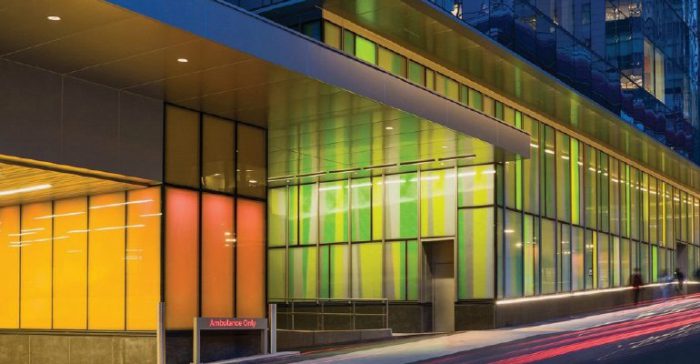So what, exactly, is a fiber optic lighting system?
nelight. Image credit: Boston Children’s Hospital
In most cases, a fiber optic system combines three elements:
1. An illuminator.
An illuminator is basically a metal box containing a special lamp with the ability to concentrate light into the end of a fiber optic harness. An illuminator can be used indoors or out, and may include additional features like color wheels, twinkle wheels or control systems for a variety of special effects
2. A fiber optic harness.
Fiber optic cable – whether PMMA or glass – is the “magic” element in a fiber optic system, the part that allows light from an illuminator to be distributed to many different points. Whether you’re using end light fiber or side light fiber, all of the cables must be bunched together at one end and fixed in a special metal piece that fits snugly into the illuminator. This bundle is called a harness.
3. Fixtures.
Because there are so many uses for fiber optic systems, Our manufacturer Visual Lighting Technologies offers a wide selection of Roblon fiber optic fixtures – both interior and exterior – to complete those systems. Tiny downlights, in-ground uplights, framing projectors and decorative Swarovski crystals are just a few examples. In most cases, a fixture is used with end light fiber to focus and adjust the fiber optic light, giving an attractive, finished look to the application. For display case applications, the XPO Series uses a conduit system to direct fiber optic cables to wash points or adjustable lens modules attached to the conduit.
Energy saving – fiber optic lighting can save energy in a number of ways. Many fixtures can “share” the light from one illuminator, providing dozens of points of illumination with the expense of lighting just one lamp. Reducing wattage use saves additional money by reducing the load on HVAC systems, and when lighting refrigerated spaces, fiber optic lighting delivers brilliant illumination without adding unwanted heat.
